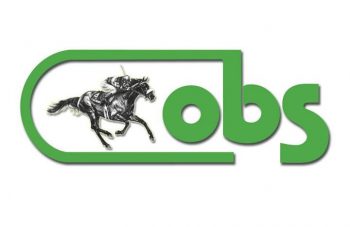
The Ocala Breeders Sales Co.’s annual spring sale of two-year-olds in training is the largest thoroughbred juvenile auction in the world, regularly featuring more than a thousand horses. This year’s edition, which ended last Friday, was an attempt to return to some sort of pre-pandemic predictability. And, for the most part, the sale succeeded in doing that.
Last year’s OBS Spring sale was delayed until June by COVID and was severely affected by buyers’ uncertainty about whether horse racing would return to normal and, if so, when. The 2020 sale grossed only $57.7 million, well under the $70 million or so that had been the norm, squeezing pinhookers who had laid out lots of money for yearlings in 2019. This year, the OBS auction, back in its usual late April slot in the calendar, slightly exceeded the results for the last pre-pandemic year, 2019. Of the 1220 horses in the catalog for this year’s sale, 727 of them (59.6%) were sold; the rest were either scratched or failed to meet their reserve. That compares favorably to the 674 of 1178 (57.2%) that sold in 2019. Gross receipts this year were just under $74 million, slightly ahead of the $72.9 million recorded two years ago. This year’s average price was $101,774, and the median price was $50,000, slightly below the $108,227 and $60,000 figures from 2019, but well ahead of last year’s pandemic-afflicted numbers.
As always, horses that breezed an eighth of a mile in under 10 seconds – a pace that none of them will ever repeat in an actual race – sold well above the average, and the track at Ocala is built and maintained to make sure as many colts and fillies as possible break that 10 second barrier. Nineteen horses recorded 9.4-second breezes (compared to only one at Fasig-Tipton’s Gulfstream sale last month). Two of the 19 failed to meet their reserves, but seventeen of them sold for an average price of just over $250,000, or two and a half times the $98,169 average for the rest of the catalogue. Oddly, though, the five most expensive horses in the sale all breezed in 10 seconds flat, so perhaps 9.4 is not the magic talisman that it has been ever since. In fact, the fastest time at the sale – 9.3 seconds – was set by an Into Mischief filly, but she drew a top bid of only $125,000 and failed to meet her reserve.
Two horses (both of whom had breezed at 10 seconds) sold for $1 million or more, a $1.25 million Najran colt that went to Peter Fluor and K. C. Weiner’s Speedway Stables, and a $1 million Montbrook filly purchased by Japan’s Katsumi Yoshida. That’s more or less the norm for the top of this sale: there were two million-dollar-plus horses last year, and three back in 2019.
Back down in the middle of the market, a major absentee was the South Korean purchasing entity KOID. Last year, the Koreans bought eight horses for $269,000, but the year before that, in 2019, they had bought 34 for $1.7 million. Their absence represents only about 2.5% of the sale’s gross proceeds, but the number of horses the Korean group typically bought is more like 5% of the total number sold, so their absence probably resulted in slightly lower prices for a number of mid-market offerings.
Unlike at last month’s Gulfstream sale, none of the consignors at the OBS Spring auction opted to forgo timed breezes. In fact, only one horse, a modestly pedigreed NY-bred gelding, was recorded as galloping, and he sold for just $12,000. Kip Elser’s Kirkwood Stables, which sold six horses at Gulfstream, for an average of just under $80,000, is the only major consignor bucking the fast-breeze trend. Elser didn’t offer any at the OBS Spring sale, but he’ll be back at next month’s Fasig-Tipton Timonium sale in Maryland, with five two-year-olds in that catalogue.. Elser’s program is the wiser one for two-year-olds, whose bones have not necessarily formed enough to stand up to the grueling training required for those fast breezes, but as long as the 10 second and under works keep attracting the dollars, it’s going to be hard to break the model, with pinhookers’ yearlings being trained for the fastest run of their lives.
Three major two-year-old sales are still to come on this year’s calendar: Fasig-Tipton Timonium next month and then both OBS and Fasig-Tipton Santa Anita in June. So far, it looks like buyers’ optimism has brought the thoroughbred market more or less back to where it was two years ago. In an industry where many other indicators are pointing downward, that’ll have to do as good news.


